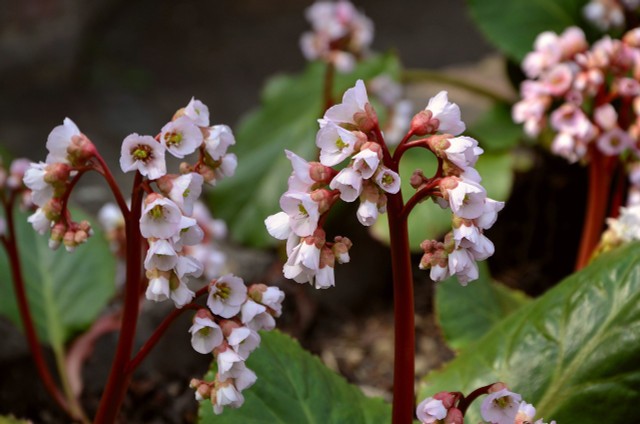
The bergenia brings color even to shady places in your garden. In this article you will learn how to plant the perennial properly and what care tips you should follow with it.
The colorful bell-shaped flowers of the bergenia are just one of the reasons why it is now increasingly planted in the home perennial bed. The shade perennial also forms rounded, rich green glossy leaves, which it does not shed even in winter. You can buy various hybrids of bergenia in garden stores, whose leaves also shine in shades of red, bronze or purple. A hardy and hardy perennial, bergenia is suitable for just about any garden.
Contents
Planting bergenia: How to do it right

If you have shady, barren places in your garden where hardly any plant wants to thrive, you should give bergenia a try. The perennial not only grows well in shady places, but also quickly forms dense plant carpets with its large leaves. The bergenia is therefore well suited as a ground cover. You can buy various types in pots as root stock in garden stores. Before you put the perennial plant in the ground, you should consider the following tips:
- The right location: Bergenia thrives in sunny and semi-shady as well as shady locations. It can get by with little sunlight, but you shouldn’t plant it directly under a deciduous tree that casts a particularly dark shadow. Beds exposed to blazing sun, especially at midday, are also rather unsuitable.
- The right soil: Bergenia is not very demanding on the soil either. Normal garden soil that is well-drained and rich in humus is usually sufficient for the perennial to feel comfortable. Only if you have very loamy soil in your garden should you work plenty of sand and humus into the soil before planting.
- The right time: It is best to plant the bergenia in the garden in spring. But you can also plant the evergreen plant in autumn. Then make sure that the soil is well prepared so that the bergenia quickly takes root and blooms in the coming spring.
Plant Bergenie correctly:
Place the bergenia together with the plant pot in a bucket of water and take it out only when no more air bubbles rise.
Loosen the soil at the site and enrich it with compost, horn shavings and some expanded clay.
Then dig the planting pit for the Bergenie. Make sure that the hole is about twice the size of the root ball.
Pot up the bergenia and place it in the planting hole.
Then fill in the excavated soil and tamp it down. Finally, water the bergenia generously.
The right care for the bergenia

If it has a location with humus-rich soil, the bergenia is usually very easy to care for. In order for the perennial to quickly form a dense carpet of leaves, you should follow these tips:
- Watering: Bergenia tolerates shorter periods of drought without any problems. The naturally falling rainwater is therefore often sufficient for the perennial as a source of water. During long hot spells in the summer, however, it is grateful for small additions of water. Even then, water the bergenia only enough to prevent the root ball from drying out.
- Fertilize: To ensure that the bergenia bears as many flowers as possible, you should fertilize it once a month from March to August. Natural and organic fertilizer, such as compost, bark humus and various plant dips, is best for this purpose.
- Pruning: You can remove withered inflorescences and leaves every year in early spring. Immediately after flowering, you should cut back the faded stems close to the ground. The leaves of the evergreen perennial plant do not require pruning.
- Diseases and pests: Bergenia is usually spared from plant diseases. Slugs also usually give the perennial a wide berth. Only the largemouth weevil and its larvae can be a danger to the bergenia. The larvae can be controlled with nematodes and you can set up special traps for the beetles.

